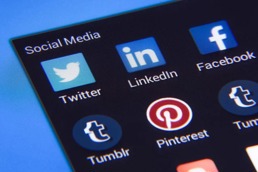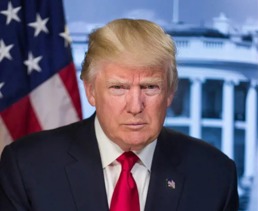How social media made Swedish far-right extremism mainstream online
-
Sist oppdatert
22. januar 2025
-
Kategori
The rise of anti-immigrant movements and hate crime in Sweden was fueled by satirical and racist memes on the internet.
SCIENCE NEWS FROM KRISTIANIA: Communication
Key takeaways
- Sweden has seen a rise in far-right movements and violence, especially online.
- Far-right leaders and influencers have started using neutral language to hide their extreme views, making their messages easier for more people to accept.
- Ph.D.-candidate Elisabeth Hasselström discusses how satirical memes that mix humor with racist ideas have helped spread far-right views and make them seem more normal to a wider audience.
(The summary was created by AI and quality assured by the editors).
Looking back twenty years ago, Sweden was known as a country based on equality, anti-racism, and nonviolence. But in 2010, this image started to erode.
Sweden experienced a resurgence of far-right movements and extremist violence that, relative to its population, is among the highest in Europe.
In 2015-2016, there was a rise in anti-immigrant movements and hate crimes in the form of property damage and arson attacks against asylum- and refugee housing.
On the internet, racist and anti-immigration ideas became more commonplace. Communication campaigns such as 'Bevara Sverige Svenskt' (Keep Sweden Swedish), and later 'Gör Sverige Bra Igen' (Make Sweden Good Again), with influence from Neo-Nazist and global far-right movements, spread across the political sphere and public arenas.
The anti-immigration party, Sweden Democrats, under the leadership of Jimmy Åkesson, rose to be one of the biggest political parties in Sweden.
Why has this change happened?
Humour emerged as a potent tool for spreading far-right ideologies in the public sphere, especially through memes based on satire.
To understand why and how far-right movements became more acceptable and widespread, one can look at two aspects: the change in leadership and the change in rhetoric, especially in the online landscape of social media and internet forums.
Neutral language as a strategy
Let´s first take a look at leadership. When Jimmy Åkesson assumed control of the Sweden Democrats in 2005, the party experienced a transformation in rhetoric to align itself more with mainstream views and to normalise its image.
In essence, through their language, the party could employ neutral messages that cloaked their far-right sentiments with open-ended questions and value-free statements, replacing outright racist and anti-semitic words with 'globalisation' or 'mass immigration.'
Similarly, social media influencers started to adopt strategically neutral language instead of being explicitly racist. This use of noncombatant rhetoric made their messages more palatable to everyday individuals who might otherwise be alarmed by explicitly racist words.
Under the guise of neutrality, far-right influencers can spread their ideas to a broader audience across social media and alternative forums.
Humour is a potent tool
Next, let's examine the behaviour of regular users. While influencers and political leaders generally adopted neutral language, humour emerged as a potent tool for spreading far-right ideologies in the public sphere, especially through memes based on satire.
Through satirical memes, individuals can ridicule concepts such as 'political correctness,' the 'elite,' 'liberals,' and people of non-White backgrounds in easily digestible, 'bite-sized' formats.
Memes – whether images, videos, or GIFs – are easily understood and spread easily across the Internet from anonymous sources. Much like photographs, they are 'worth more than a thousand words.'
Not only do satirical racist memes push the boundary of 'normal,' but they also function to push people's buttons.
Memes of racist satire in Sweden draw inspiration from fringe online communities like 4chan and 8chan/8kun, as well as white supremacist movements in the US and Germany.
They have also been used by the extreme-right neo-Nazi organisation called the Nordic Resistance Movement (NRM).
When NRM shifted their communication style by embracing humorous memes, they moved away from traditional National Socialist (Nazi) rhetoric and imagery. Instead, they adopted a more palatable and light-hearted form of propaganda presented with entertainment, humour, and satire through images of frogs and apes.
They introduced a layer of irony that renders far-right ideas more appealing, legitimate, and acceptable to a broader audience. The strategic deployment of memes infiltrates extremist ideologies into public discourse and enables far-right ideas to transition from internet fringes to more mainstream platforms.

Les temamagasinet om strategisk kommunikasjon:
"Just kidding" - when jokes target marginalised groups
Satirical memes have a dual function and nature. First, satirical and racist memes can create an in-group for people who are 'in on the joke.' Racist jokes can disrupt mainstream boundaries of reason by pushing the boundary of what is deemed 'acceptable' and provide an outlet for people to express violent and racist fantasies that they would otherwise repress.
Not only do satirical racist memes push the boundary of 'normal,' but they also function to push people's buttons. By blending popular cultural iconography with stereotypes depicting homophobia, anti-feminism, anti-Semitic ideas, etc., memes can function as a type of 'controlling humour.'
Controlling humour inflicts conflicts in relationships by ridiculing someone, triggering negative emotions, and signalling superiority. By ridiculing a 'target,' these jokes can keep people in line and motivate them to adopt a behaviour to escape this ridicule. It can also motivate others to not speak out for fear of being the new target of ridicule.
The other function of satirical memes is to create an out-group. The structure of online racist jokes normalises prejudiced attitudes toward 'the Other' while reinforcing racist claims to 'truth' by contributing to the reduction of modern ambivalence toward those who are ridiculed.
In the process of laughing at 'the Other,' it can construct a racist order which introduces a power imbalance between those making the joke and those laughed at.
Moreover, jokes targeting marginalised groups are meant to be humorous, meaning a frivolity that deflects accountability under the guise of 'mere jokes,' thereby making online advocacy of political violence and exclusion more palatable to a broader audience.

Individual extremists were protected by in-group
Understanding the roots of Sweden's adoption of far-right and extremist ideas requires a nuanced examination of the political and societal events that shaped the nation throughout the 2010s, and continue to impact Sweden today.
The neutral language by far-right leaders alongside the widespread dissemination of satirical memes online, allows extremist viewpoints to be normalised. It has created a sense of nonaccountability, as those using this language can simply say: “It´s just a joke” or “I´m not serious” when confronted with their controversial statements.
This becomes a rhetorical device that both shields individuals from scrutiny through deflection while fostering solidarity within the in-group and reinforces prejudiced narratives against perceived 'outsiders.'
As memes spread across the internet, be they funny memes or not-funny memes, these ideas take on a life of their own.
References:
Åkerlund, M. (2020). The importance of influential users in (re) producing Swedish far-right discourse on Twitter. European Journal of Communication, 35(6), 613–628.
Askanius, T. (2021). On Frogs, Monkeys, and Execution Memes: Exploring the Humor-Hate Nexus at the Intersection of Neo-Nazi and Alt-Right Movements in Sweden. Television & New Media, 22(2), 147–165. https://doi.org/10.1177/1527476420982234
Billig, M. (2001). Humour and hatred: The racist jokes of the Ku Klux Klan. Discourse & Society, 12(3), 267–289.
Billig, M. (2005). Laughter and ridicule: Towards a social critique of humour. Laughter and Ridicule, 1–272.
DeCook, J. R. (2018). Memes and symbolic violence:# proudboys and the use of memes for propaganda and the construction of collective identity. Learning, Media and Technology, 43(4), 485–504.
Text: Anna Elisabeth Hasselström, Ph.D.- candidate at the institute of communication, Kristiania.
This text was published on sciencenorway.no on the 29th of November 2024 with the title "This is how social media made Swedish far-right extremism normal online" and features in the print magazine Kunnskap Kristiania - Hvem stoler du på?.
We love hearing from you!
Send your comments and questions regarding this article by e-mail to kunnskap@kristiania.no.
Siste nytt fra Kunnskap Kristiania
 Kunnskap KristianiaLes mer
Kunnskap KristianiaLes merSlik skjuler reklamen seg i hverdagen din
Hva skjer når du trykker “liker” på en video eller deler noe i sosiale medier? Kunnskap KristianiaLes mer
Kunnskap KristianiaLes merDroner redder liv, men er også sårbare selv
Droner brukes i redningsarbeid og vedlikehold av infrastruktur. Hvordan skal vi beskytte dem mot hacking? Kunnskap KristianiaLes mer
Kunnskap KristianiaLes merRolls-Royce-logikk kan gi tog som nesten aldri står
Tenk deg en verden der fly er i rute og sykehus driftes effektivt. Hvordan får vi det til? Kunnskap KristianiaLes mer
Kunnskap KristianiaLes merFem områder der kunstig intelligens kan påvirke livet ditt
Kunstig intelligens er kommet for å bli. Professor Jon Arild Johannessen skisserer noen fremtidsscenarier.





